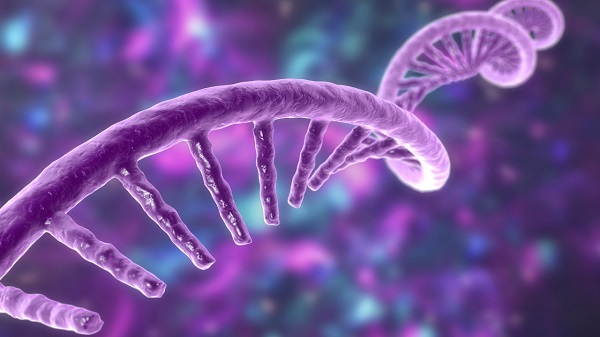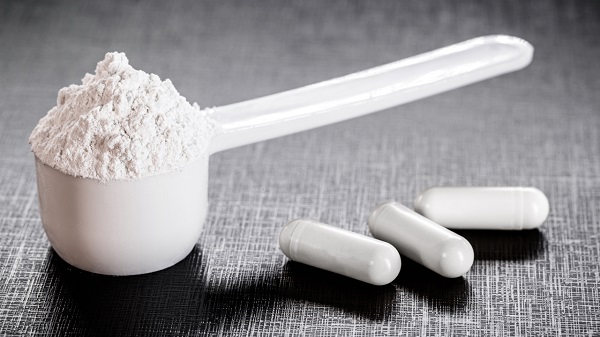Unlocking the secrets behind muscle recovery and growth is essential for anyone looking to enhance their physical fitness or athletic performance. This exploration is not just for elite athletes but also for fitness enthusiasts seeking to maximize their workouts and ensure their body’s health. Understanding the complex biological processes that facilitate muscle repair and growth can significantly influence one’s approach to exercise, nutrition, and rest. Armed with this knowledge, individuals can tailor their fitness routines for optimal results, leading to improved strength, endurance, and overall well-being.
Contents
Understanding Muscle Growth
Muscle growth, or hypertrophy, occurs when the fibers in a muscle are subjected to stress, such as weightlifting or resistance training, beyond their current capacity. This stress causes microscopic damage to the muscle fibers, signaling the body to repair and reinforce these fibers, making them thicker and stronger than before. The process is influenced by factors including mechanical tension (the force exerted on muscles), muscle damage (the small tears in muscle fibers from intense exercise), and metabolic stress (the buildup of metabolites like lactate). Understanding these factors is crucial for designing effective training programs that stimulate muscle growth efficiently.
Nutrition, genetics, and training intensity all play significant roles in how muscles adapt and grow over time. It’s not just about lifting weights; it’s about engaging in a well-rounded fitness routine that challenges the muscles in various ways to promote continuous growth. By varying workouts and ensuring muscles are exposed to new stresses regularly, individuals can avoid plateaus and encourage consistent muscle growth. This strategic approach to exercise helps maximize the muscle growth potential for individuals of all fitness levels.
The Role of Protein Synthesis
Protein synthesis is the biological process that drives muscle growth, repairing the microtears in muscle fibers caused by exercise. This process outpaces the rate of muscle protein breakdown, leading to net muscle gain. The balance between protein synthesis and breakdown is influenced by exercise, with resistance training particularly effective at stimulating protein synthesis. It’s the body’s way of adapting to stress, resulting in stronger and larger muscles.
However, exercise alone is not enough to maximize protein synthesis; nutrition also plays a critical role. Consuming adequate amounts of protein is essential for fueling the muscle repair process. Studies suggest that the timing of protein intake, such as consuming protein shortly after a workout, can enhance the muscle recovery process by taking advantage of the body’s anabolic window. This strategic approach to nutrition supports the body’s natural repair mechanisms, ensuring muscles recover faster and become stronger.
Nutrition’s Impact on Recovery
Nutrition profoundly impacts muscle recovery and growth, with protein, carbohydrates, and fats playing pivotal roles. Proteins are the building blocks of muscle repair, carbohydrates replenish glycogen stores used during exercise, and fats support overall health. A balanced diet ensures the body has the necessary nutrients to recover from workouts and build muscle over time. Understanding the synergy between these macronutrients can guide individuals in crafting meals that support their fitness goals.
The timing and composition of meals also influence recovery. Consuming the right balance of nutrients before and after workouts can enhance performance and speed up recovery. For instance, a post-workout meal rich in protein and carbohydrates can significantly improve muscle protein synthesis and glycogen replenishment. This nutritional strategy not only supports muscle recovery but also prepares the body for future workouts, enabling individuals to train more effectively and with less downtime between sessions.
Hydration and Muscle Function
Hydration is a key but often overlooked element in muscle recovery and performance. Water plays a crucial role in transporting nutrients to the muscles, removing waste products, and facilitating chemical reactions within the body. Adequate hydration ensures that the muscles function optimally, both during and after exercise. When muscles are well-hydrated, they are less prone to injury and can perform at their best.
The impact of dehydration on performance can be significant, leading to decreased strength, endurance, and increased recovery time. It’s recommended to drink fluids before, during, and after exercise to maintain hydration levels. This not only aids in recovery but also enhances the body’s overall function during physical activity. For individuals engaged in intense or long-duration exercise, replenishing electrolytes lost through sweat is also essential to maintain the body’s fluid balance and ensure muscle and nerve functions are not compromised.
Sleep and Muscle Recovery
Sleep is paramount in the muscle recovery process, as it’s during deep sleep that the body undergoes significant repair and growth through the release of growth hormones. This period of rest allows for the repair of damaged muscle tissues and the strengthening of muscles, contributing to muscle growth and recovery. The quality and quantity of sleep directly affect the efficiency of these processes. Ensuring adequate rest is as crucial as any workout for those aiming to enhance their physical fitness and muscle mass.
A lack of sufficient sleep can hinder muscle recovery, reduce the body’s ability to synthesize protein and increase the risk of injuries. It’s recommended to aim for 7-9 hours of quality sleep per night to support optimal muscle recovery. Strategies to improve sleep include maintaining a consistent sleep schedule, creating a restful environment, and avoiding stimulants before bedtime. By prioritizing sleep, individuals can significantly improve their recovery times and overall physical performance.
Active Recovery Techniques
Active recovery involves engaging in low-intensity exercise during the recovery period. Unlike passive rest, which involves complete rest from physical activity, active recovery stimulates blood flow to the muscles without placing undue stress on them. This increased circulation helps to flush out metabolic waste products accumulated during intense workouts, thereby reducing muscle soreness and enhancing the recovery process. Activities like walking, yoga, and light cycling are excellent examples of active recovery that can be incorporated on rest days.
Incorporating active recovery techniques into a fitness regimen can significantly improve flexibility, reduce muscle stiffness, and prepare the body for future workouts. It’s a strategic approach to recovery that balances rest with gentle movement, encouraging quicker recuperation and readiness for the next training session. Tailoring active recovery activities to individual needs and preferences can make the recovery process more enjoyable and effective, leading to better long-term fitness outcomes and reduced risk of injury.
The Role of Supplementation
Supplementation can play a supportive role in muscle recovery and growth, complementing a well-balanced diet. Certain supplements, such as Branched-Chain Amino Acids (BCAAs), creatine, and omega-3 fatty acids, have been shown to aid in the recovery process. BCAAs can help reduce muscle soreness and accelerate recovery by stimulating protein synthesis, while creatine improves strength and power, enhancing performance in subsequent workouts. Omega-3 fatty acids, known for their anti-inflammatory properties, can also aid in reducing muscle soreness post-exercise.
While supplementation can be beneficial, it’s crucial to approach it with a balanced perspective, understanding that supplements are meant to supplement, not replace, a nutritious diet. Consulting with a healthcare provider or a nutritionist before starting any supplement regimen is advisable to ensure it aligns with individual health needs and fitness goals. When combined with proper nutrition and exercise, evidence-based supplementation can enhance muscle recovery and growth, contributing to overall physical well-being.
Managing Overtraining and Injury Prevention
Overtraining occurs when the volume and intensity of exercise exceed the body’s recovery capacity, leading to decreased performance, fatigue, and increased risk of injury. Recognizing the signs of overtraining, such as prolonged muscle soreness, irritability, and decline in performance, is essential for maintaining a healthy balance between training and recovery. Implementing adequate rest days and varying the workout intensity can help prevent overtraining, allowing the body to recover and adapt to the stresses of exercise.
Injury prevention is closely tied to managing overtraining and involves adopting strategies such as proper warm-up and cool-down routines, incorporating strength training to improve muscle and joint stability, and paying attention to technique during workouts. Ensuring a progressive approach to increasing workout intensity and volume can also help minimize the risk of injury. By listening to the body and responding to its signals, individuals can maintain a healthy training regimen that promotes muscle growth and recovery while minimizing the risk of overtraining and injury.
Your Pathway to Peak Performance
Taking the time to understand the science of muscle recovery and growth illuminates a path to achieving peak physical performance and well-being. By adopting strategies informed by the intricate dance of nutrition, rest, hydration, and active recovery, individuals can optimize their fitness routine for enhanced muscle development. This knowledge empowers fitness enthusiasts to make informed decisions, elevating their health and fitness to new heights, ensuring that every workout, every meal, and every rest day propels them toward their ultimate fitness goals.










